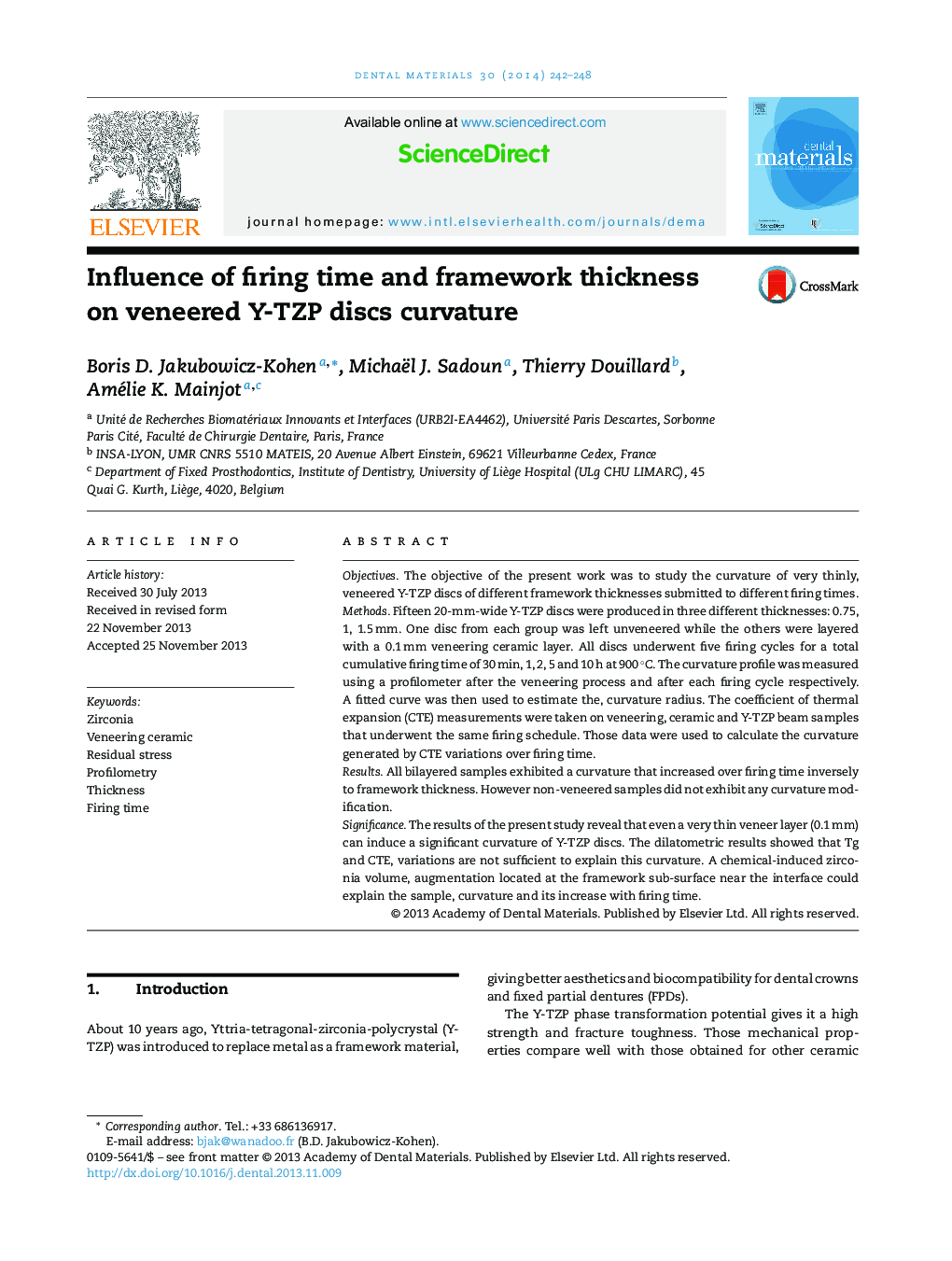| Article ID | Journal | Published Year | Pages | File Type |
|---|---|---|---|---|
| 1420908 | Dental Materials | 2014 | 7 Pages |
ObjectivesThe objective of the present work was to study the curvature of very thinly, veneered Y-TZP discs of different framework thicknesses submitted to different firing times.MethodsFifteen 20-mm-wide Y-TZP discs were produced in three different thicknesses: 0.75, 1, 1.5 mm. One disc from each group was left unveneered while the others were layered with a 0.1 mm veneering ceramic layer. All discs underwent five firing cycles for a total cumulative firing time of 30 min, 1, 2, 5 and 10 h at 900 °C. The curvature profile was measured using a profilometer after the veneering process and after each firing cycle respectively. A fitted curve was then used to estimate the, curvature radius. The coefficient of thermal expansion (CTE) measurements were taken on veneering, ceramic and Y-TZP beam samples that underwent the same firing schedule. Those data were used to calculate the curvature generated by CTE variations over firing time.ResultsAll bilayered samples exhibited a curvature that increased over firing time inversely to framework thickness. However non-veneered samples did not exhibit any curvature modification.SignificanceThe results of the present study reveal that even a very thin veneer layer (0.1 mm) can induce a significant curvature of Y-TZP discs. The dilatometric results showed that Tg and CTE, variations are not sufficient to explain this curvature. A chemical-induced zirconia volume, augmentation located at the framework sub-surface near the interface could explain the sample, curvature and its increase with firing time.
